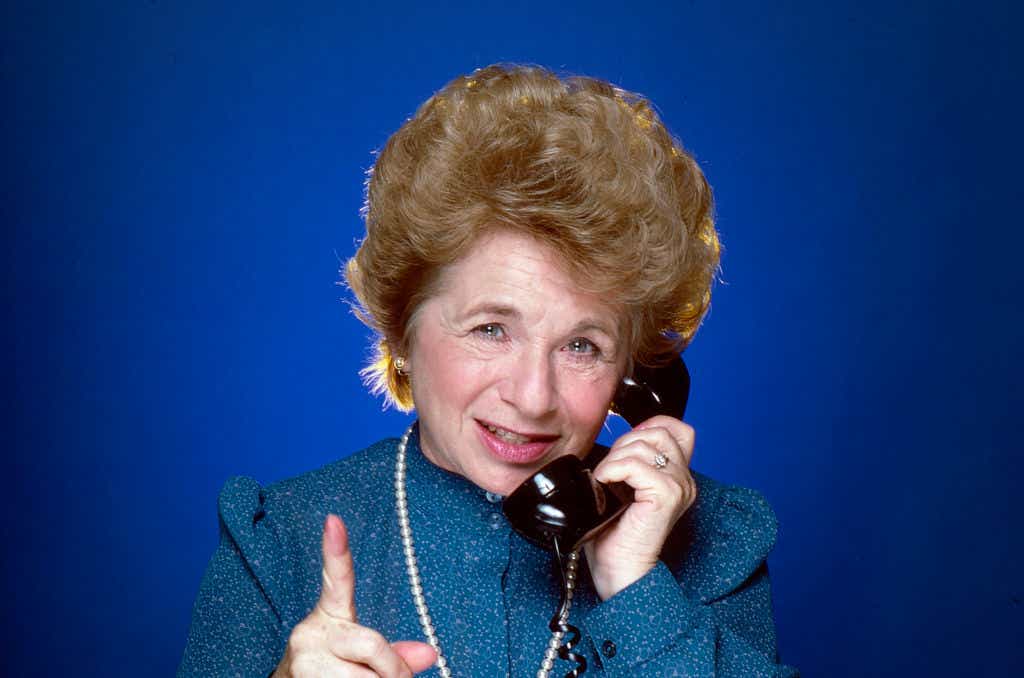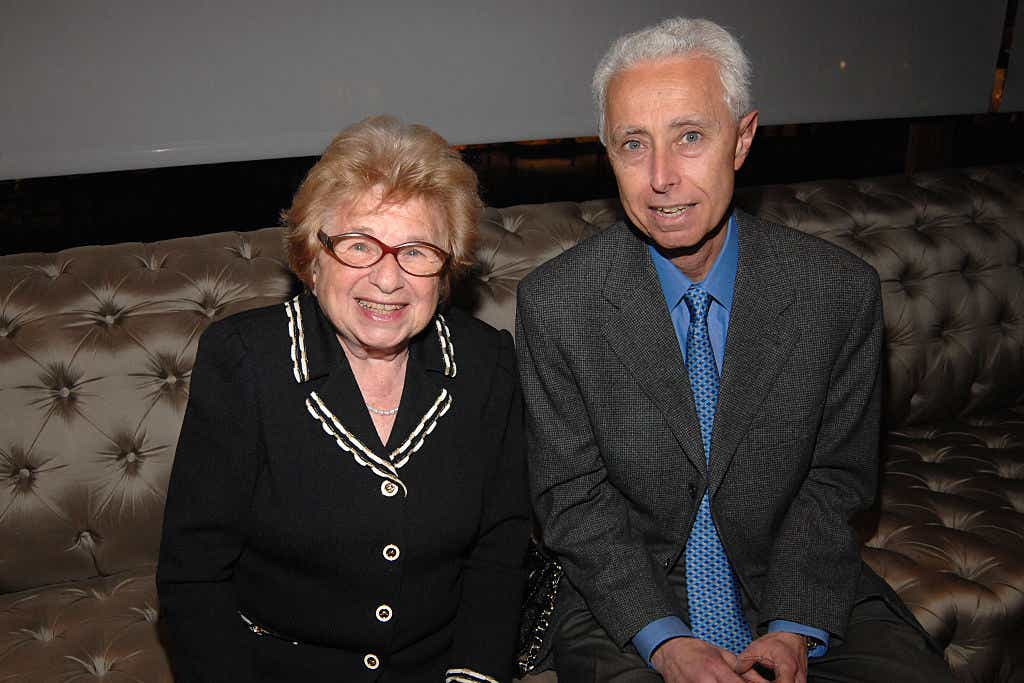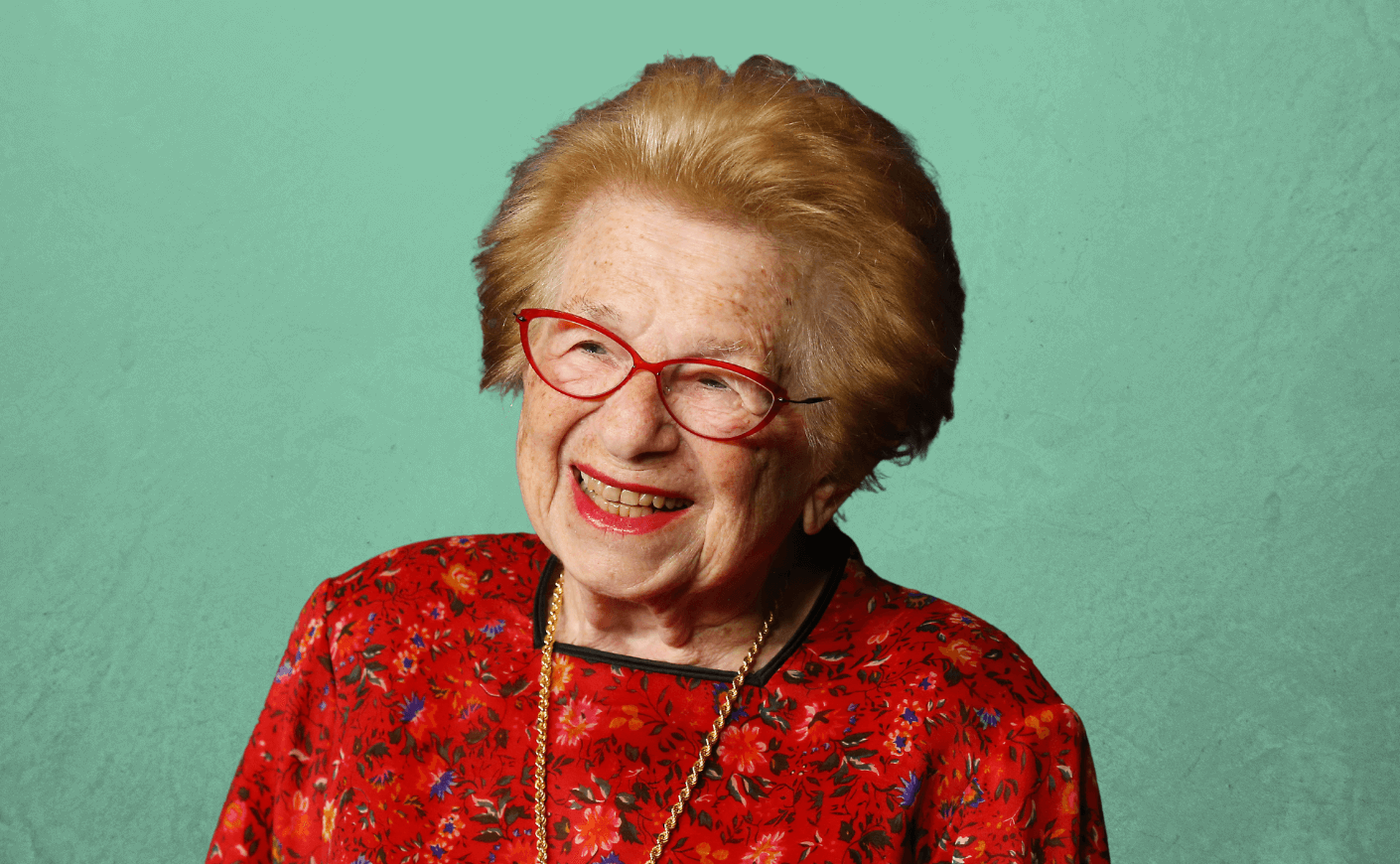If you’re above the age of 30 or so, the name Dr. Ruth will conjure up a host of memories: That thickly accented speech, that tiny frame, that close-cropped hair, that blush-inducing frankness about everything from marital arguments to sex positions. And though we lost this bold and beloved therapist in July 2024, we’re blessed by a posthumous book that offers a powerful prescription for one of America’s most troubling illnesses: loneliness.
By now, you’ve heard countless times that social isolation is bad for you, and even increases your all-cause mortality — “as deadly as smoking 15 cigarettes a day!” the headlines and articles shriek. But while we know it feels terrible to be lonely (and if you’re one of the 100 percent of people who’ve experienced it, you can certainly vouch for that fact), how many of us know concrete ways to banish that feeling from our lives? The Joy of Connections: 100 Ways to Beat Loneliness and Live a Happier and More Meaningful Life — a book written by Dr. Ruth Westheimer, New York Times journalist Allison Gilbert, and longtime collaborator Pierre Lehu — presents a roadmap for connecting with your fellow humans, complete with actionable steps to give any lonelyheart the nudge they might desperately need.
When I speak with Gilbert and Lehu, they’re still glowing from a fabulous book event at the New York Public Library the prior night, which included appearances from Dr. Ruth’s children. “It was standing room only, plus spillover in another room,” says Gilbert, “it was incredible.” (Sounds like Dr. Ruth is still bringing people together.) Here, we talk about the tragedy that marred Dr. Ruth’s young life, her surprising thoughts on modern technology, and the tough first step that any lonely person needs to take toward a more connected, abundant life.
Katie Couric Media: How did you meet Dr. Ruth, and how did this book come about?
Allison Gilbert: Pierre has known and worked with Dr. Ruth for more than four decades, but I only met her in August of last year, when I was given the greatest assignment ever from The New York Times. She was on a quest to become New York State’s ambassador to loneliness and that campaign was ultimately successful, which is what my article was about. She liked the piece so we stayed in touch — it was hard not to be swept up in Ruth’s warmth and her energy, optimism, and positivity. And the three of us started talking about the idea for a book about combating loneliness, especially given that she was moved personally by her own experiences of loneliness.
Dr. Ruth was this iconoclastic, almost made-for-TV figure, and was adored in America for decades. What do you think gave her this kind of long-term staying power?
Pierre Lehu: She was a trained sex therapist, which is essentially a behavioral therapist — they don’t find out why you’ve got a problem; they just give you advice about how to fix it. That’s the same thing with this book, which has 100 practical suggestions for how to cure your loneliness. It’s not a book where you’ve got to sit down and ponder, Why am I lonely? Just follow the instructions. Not every one might work for you, but you can pick the ones that sound like they might.
AG: I think her advice is timeless, whether we’re talking about sexual dysfunction or loneliness — both of which she would’ve described as epidemics. People don’t have a romantic partner at all, or they fear that they don’t have the right romantic partner and they’re not sure how to disengage, because they fear being isolated or alone. All of her work was about belonging and relationships, whether platonic or sexual. At the end of the day, if you feel seen and heard and valued, you’re going to have better sex, and you’re going to have better, more meaningful relationships.
Dr. Ruth experienced incredible tragedy in her life: being sent away from her parents during WWII on the Kindertransport, eventually losing both of them in concentration camps, spending years in an orphanage. She was clearly affected by loneliness at an early age.
PL: If you go back in her life, she couldn’t have been any more lonely, having been orphaned at the age of 10 during the Holocaust. She wrote about how lonely she felt when she was in the orphanage — though there were plenty of other kids around her, that’s not like having your parents. And then she went to Palestine and got severely wounded again and almost died in a bomb blast. Loneliness was a thread in her life, and she credits her early childhood for helping her make it through all the later lonely years. But she understood loneliness and how painful it is and therefore wanted to help people.
It’s such a great title for the book — The Joy of Connections — because it emphasizes pleasure, as opposed to feeling as if it’s oriented toward a problem. Can you talk about how you landed on that title?
AG: We were much more direct when thinking about the title, initially — like, “This book is about loneliness.” But then we kept really zeroing in on Ruth’s message, which is that we all have agency to overcome social isolation, and have joy and connections. And Ruth might just have been the most positive, forward-thinking person I have ever encountered. And so, to me, the “joy of connections” wraps up Ruth’s ethos so perfectly.
In the book, we talk about the fact that loneliness is in fact curable — that we all have the capacity to move forward and begin anew. And if we don’t know how to do that or we’ve stumbled and we need to recalibrate, Dr. Ruth has your back. She will show you, step by little step, how to move forward. She’s a cheerleader, coach, and tough-love champion. But in the aggregate, she’s the tailwind that’s going to make you want to live the best life for yourself. As she would say, no one can do that hard work for you — and she’s going to show you how, with love. But also she brings some very Dr. Ruth-y tough talk, which is exactly how she always was on TV and radio. She’s not going to let you get off the hook: There are no euphemisms, no beating around the bush.

What do you think are the biggest hurdles against curing loneliness in American society right now?
AG: I think that ultimately, the key to ridding your life of loneliness doesn’t reside in your neighbor, your neighborhood, or in the larger community actually. The key to building the kind of connections we most want resides in you. Dr. Ruth was all about being proactive — she was always marching forward, wanting to do and not rely upon others to do on her behalf. And I believe that same energy and that same focus is what this book argues that we all have the capacity for. And isn’t it wonderful that there’s a solution?
What are some of the primary elements of Dr. Ruth’s approach to overcoming loneliness, as the book outlines it?
PL: The first thing she said to us is, “Tell the lonely people to look in the mirror and say, ‘I’m lonely.’” So you can talk about broader society and yes, that’s part of the problem, but really, each person has to admit there is a problem. And once you admit that, you can begin to solve it.
AG: There are five components of Dr. Ruth’s “menu for connection,” and the biggest one is self. In a book about connections, that might seem surprising. There’s another important part of this: When we look at ourselves, it’s not just about admitting loneliness, although I think that’s critical. But it’s also about asking ourselves about the behaviors that we need to examine — the ones that have created the loneliness. Are we inadvertently pushing people away? Are we not as welcoming as we think we are? Are we being curious about another person’s life and asking questions? Are we proactively making dates to see friends? Not just saying, “Let’s get together sometime,” but are we actually prioritizing these plans?
So the interrogation of our own behavior is really central to this conversation. The other thing I wanted to emphasize is technology. She said, “You might think because I’m a 96-year-old woman, that I would see technology as the enemy.” But Dr. Ruth’s position was that we should use technology as fuel for in-person conversation and in-person connections. If we use technology to distance ourselves from in-person connections, that’s where the tension comes into play and where technology gets in the way.
PL: I can add a personal example, which we mention in the book. I lost my wife of 45 years less than two years ago. And loneliness overcame me. Then I read a letter in the Times, where someone said, “If you stop accepting invitations, they’ll stop coming.” And I thought to myself, When you’re a married couple, other people want to get together but you’ve got someone there with you all the time so you’re not necessarily always looking for company.
So I started saying yes to everything, even to things that I never would’ve said yes to years ago, like French language meetups and community board meetings. And maybe I regretted saying yes every once in a while, but much more often, I realized that it’s so much better to do something with somebody else than to be alone. Otherwise, you could sit and watch TV every night. And that’s certainly not good.
Again, it all goes back to accepting the fact you’re experiencing loneliness and you’ve got to make changes in order to overcome it. If you just sit there, the loneliness will get worse and worse. What we’re trying to provide in this book is a roadmap of ideas, in case you can’t think of anything on your own. I mean if it was that easy to think of ways to combat loneliness on your own, no one would be lonely, right?

I feel like there’s this pervasive sense that it’s almost embarrassing to be lonely, as if you haven’t been “chosen” by other people. I really appreciate the fact that this book is taking a proactive approach to solving loneliness and removing shame from the equation.
AG: I’ve gone to some loneliness conferences featuring some of the biggest names studying social isolation. Dr. Ruth’s menu for connection is groundbreaking, novel, and important, and it’s being perceived that way. It brings directness to the conversation as opposed to a think-tank perspective. And the way she oriented her thinking — that we should all focus on our relationships — is really being absorbed and digested by those who are in the trenches. And I think that’s such an affirmation that Dr. Ruth’s wisdom, grounding in science, and research can pivot to addressing this epidemic of loneliness.









